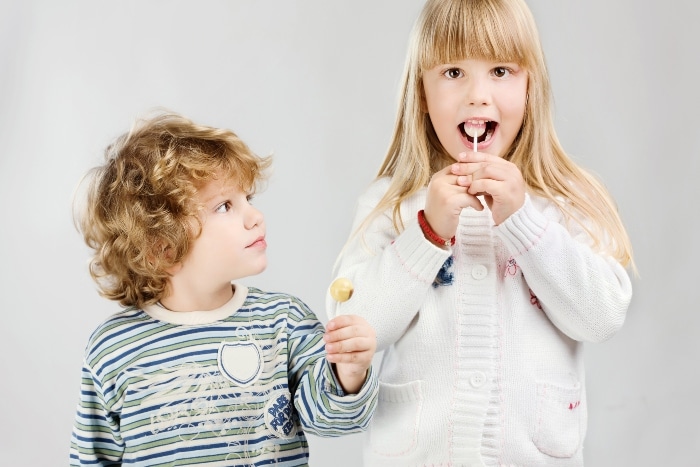Teaching kids how to be kind is an essential part of their overall development. Kindness helps children build healthy relationships, develop empathy, and contribute positively to their communities. Here are some strategies to teach kids how to be kind:

Be a Role Model
Children learn by observing the behavior of those around them, particularly their parents and caregivers. Show kindness in your daily interactions, such as being polite, helping others, and practicing empathy. Your actions will serve as a powerful example for your children.
Talk About Kindness
Engage children in conversations about kindness. Discuss what it means to be kind, why it’s important, and how it feels to receive or show kindness. Use real-life examples or stories to illustrate kindness in action.
Encourage Empathy
Help children understand and relate to the feelings of others. Encourage them to imagine how someone else might feel in a certain situation. You can ask questions like, “How do you think your friend felt when you shared your toy with them?” This cultivates empathy and helps children recognize the importance of considering others’ emotions.
Teach Respect
Teach children to treat others with respect and kindness, regardless of their differences. Emphasize the importance of accepting others for who they are, regardless of their race, religion, gender, or abilities. Encourage inclusive attitudes and discourage negative stereotypes.
Foster Gratitude
Help children develop a sense of gratitude by regularly expressing appreciation for the kindness shown to them. Encourage them to say “thank you” and write thank-you notes for acts of kindness they receive. Practicing gratitude promotes positive thinking and helps children recognize the value of kindness.
Practice Random Acts of Kindness
Encourage children to engage in random acts of kindness. This could include helping a classmate with their schoolwork, holding the door for someone, or making a small gift for a friend. Engaging in such acts promotes a sense of responsibility and compassion towards others.

Teach Conflict Resolution
Teach children how to resolve conflicts peacefully and respectfully. Encourage them to communicate their feelings calmly and listen to others without judgment. Help them understand that everyone’s opinions and perspectives are valid.
Discuss the Impact of Kindness
Engage children in discussions about the positive effects of kindness. Talk about how kind actions can make someone’s day better, foster friendships, and create a positive environment. Help them see the ripple effect of their kind gestures.
Create a Kind Environment
Foster a culture of kindness in the home, classroom, or community. Establish clear expectations for kind behavior and create opportunities for children to collaborate and work together on kindness projects or initiatives.
Read and Discuss Kindness
Incorporate books and stories that highlight acts of kindness and empathy into your child’s reading list. After reading, discuss the stories and characters, emphasizing the lessons learned and how kindness played a role.
Volunteer Together
Engage in volunteer activities as a family, such as helping at a local shelter, participating in community clean-up projects, or assisting with charity events. By involving children in these activities, they can experience firsthand the impact of kindness and giving back to the community.
Encourage Positive Self-Talk
Teach children to be kind to themselves. Encourage positive self-talk and self-compassion, helping them understand that kindness starts from within
Encourage Inclusive Behavior
Teach children to include others, celebrate diversity, and be kind to everyone, regardless of their backgrounds, abilities, or differences. Foster an environment that values inclusivity and understanding.
Reinforce Kind Behavior
Praise and acknowledge acts of kindness displayed by your children. This positive reinforcement encourages them to continue practicing kindness.
Remember, teaching kindness is an ongoing process. By consistently modeling and reinforcing kind behavior, you can help shape children who are empathetic, compassionate, and understanding individuals.








Yes to all these strategies! As a mom of 3 now grown up kids, I find being a role model is the best way to teach them. They observe and mimic what we do – actions speak louder than words seem to fit kids following adults well.
Thank you for posting this. It’s so important to teach our children to be kind in this mean world.
I love all of these and I do this with my kids. I remind them to always be kind because you never know what someone is going through.
It is good to encourage good behaviors from a young age. These are all things that kids learn from their parents. Always helps to be a good role model.
This is so important to teach kids. We also need to set the example and show kindness.
I was with my godson today, he’s almost 18 months, he’s starting to explore hitting, grabbing, pushing. I know he’s not being mean, it’s totally just developmental but I also know it’s such an important time for me to gently correct him and start teaching him kindness.
Being a role model that shows kindness as well as reinforce those kind actions and self talk are big ones for me. Those three things can help build a resilient, kind adult.
It is really important to teach our kids to be kind and respectful as soon as possible. This is a really great article to read thanks for sharing this with us
I’m so glad to see us focusing on teaching kindness, valuing this virtue has been so underappreciated for too long!
What a fantastic read! Teaching kindness to kids is a vital lesson that shapes not only their character but also the world they’ll grow up in. Loved it.
I think the best way to teach kindness to our kids is to be a role model. This is the best way to make the world around us better!
I absolutely love that you wrote about this! Teaching kindness and empathy is among the most important gifts we can give our children. And I absolutely believe being a role model is the absolute best way to teach our children.
Yes to all these tips. Lets not forget that to teach is to teach by example and be a role model.